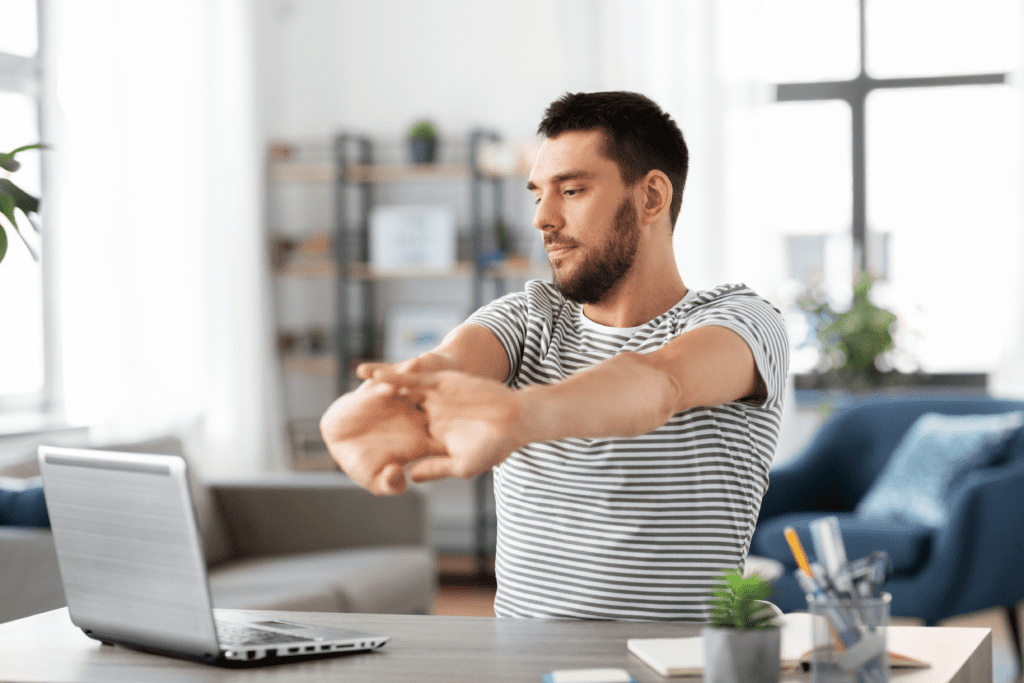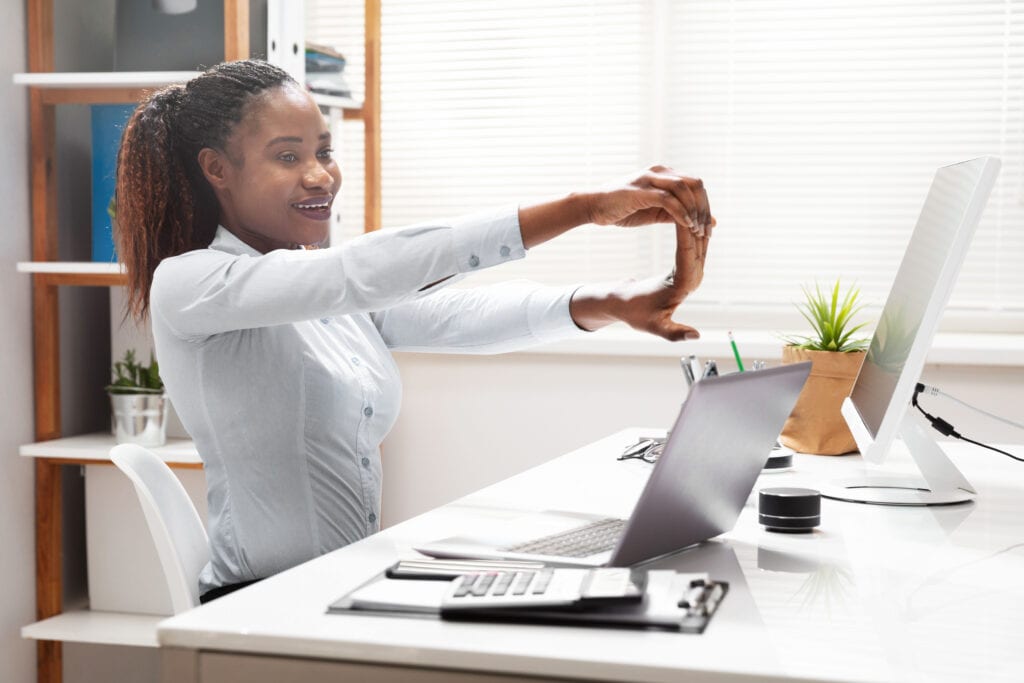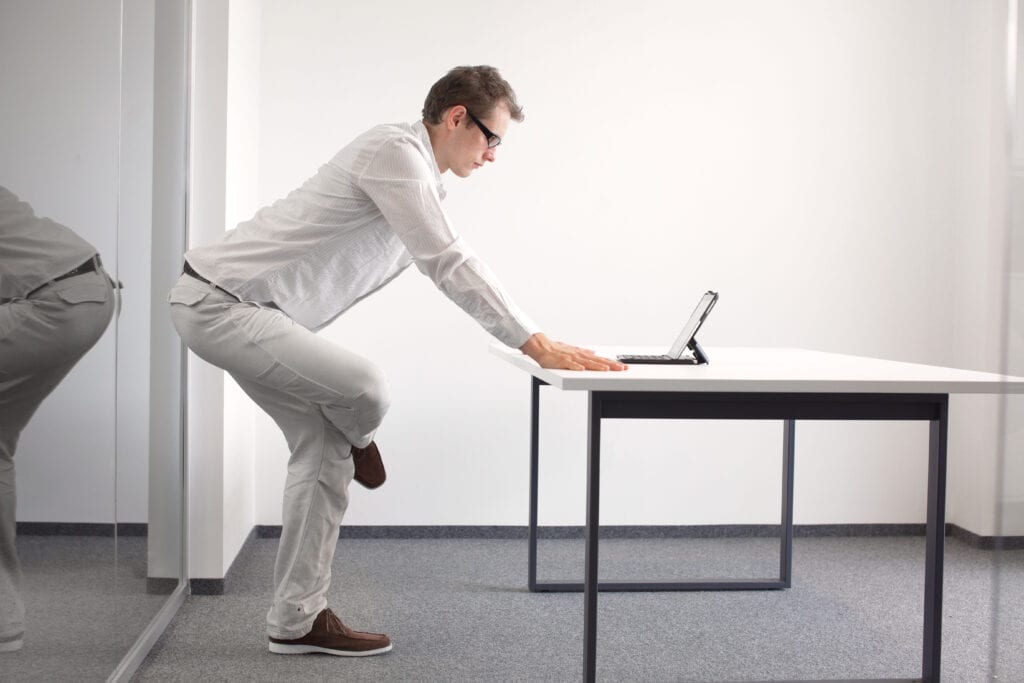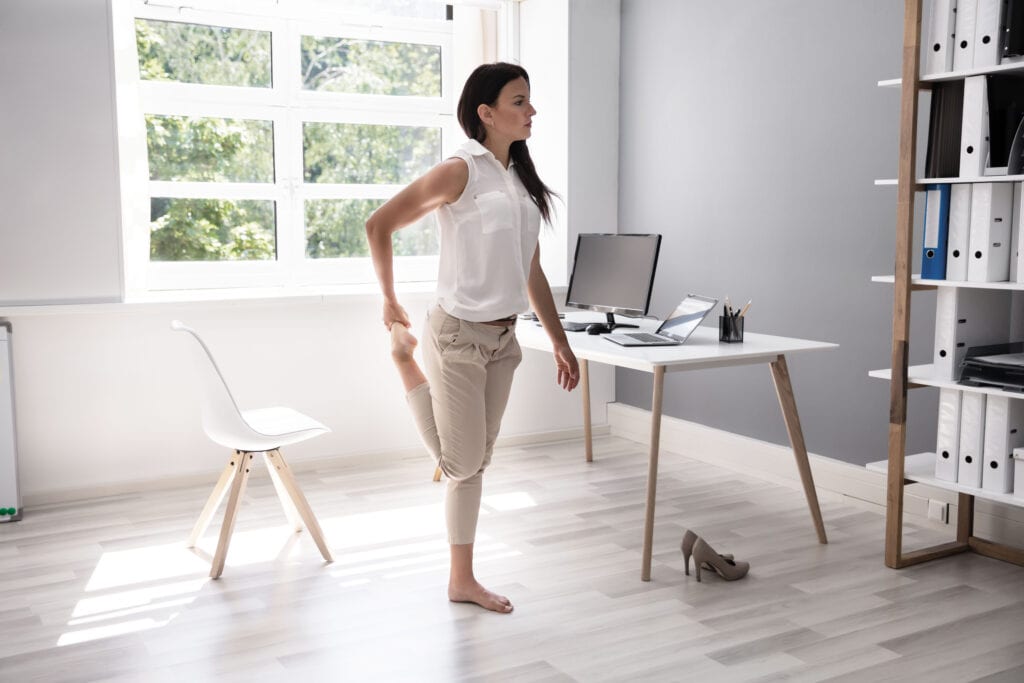
9 stretch exercises for work that are not embarrassing
For most of us, sitting for long stretches of time is part of daily life. Some people sit at their desk for up to 10 hours a day, which is quite stressful for their bodies, and particularly bad for their metabolism and cardiovascular system.
But doing simple exercises to compensate for the time spent sitting can help prevent risks such as excess weight, diabetes, and tension. Sitting for too long shortens our muscles, leading to poor posture, which in turn can cause pain.
But there aren’t many people who can get excited about going jogging after a long day in the office. According to a study carried out by a University in Spain, the number of people who sit for longer than 4.5 hours each day rose by 7.4 percent between 2002 and 2017. In Germany, 57.2 percent of men and 50.2 percent of women sit for long periods of time each day.
But it’s not just working from home or sitting at a desk that causes bad posture. Sales agents who spend most of their time visiting clients, as well as warehouse and factory workers, are asking a lot from their bodies, considering the repetitive movements involved in their work.
But there’s good news! There are ways to easily integrate stretches into your work life to help prevent muscle shortening, tension, and other physical problems.
In this article, we explore 9 stretches that you can integrate into short work breaks while working from home, in a factory or warehouse, or while working outside the office.
During these short breaks, your body produces endorphins that help you to relax, which makes it easier to get through the day. A small intermezzo is all it takes to improve your day.
Exercise 1: Stretch your neck
Staying in the same position while engaging in repetitive movements is really bad for your neck. And if your neck is unhappy, you may end up with headaches or migraines, which really put a dampener on your day.
The following exercise relaxes and strengthens your neck:
- Sit up straight on your office chair, or stand with a straight back.
- Now tilt your head slowly to the left while looking forward: do not turn your head to the left.
- Then place your left hand on your right ear and slowly increase the stretch.
- If you want a more intense stretch, keep your right arm and shoulder heavy, pulling downwards.
- Hold the stretch for 10 to 15 seconds.
- Change sides and repeat by tilting your head to the right.

Exercise 2: Stretch your arms and improve your posture
Many of us work predominantly with our hands and arms – whether we are sitting at a desk or presenting information to clients. Your arms work hard to get the job done, so they definitely deserve a break!
The following exercise requires just a few minutes to strengthen your arm and shoulder muscles, which in turn will improve your posture:
- Sit or stand up straight.
- Hold your hands in front of you with your fingers interlaced, palms facing away from you.
- Now take 10 seconds to round your back (like a cat stretching after standing up) and then another ten to reverse the position and stick out your chest, one movement flowing into another.
- Repeat 10 times.

Exercise 3: Give your fingers a break
Many of us don’t really think about how much stress our fingers are under when we work from our desks. They deserve a break from all that typing and carrying!
- Stretch your left arm forwards, parallel to the floor, with your palm facing down.
- Take the fingertips of your left hand into your right hand and gently pull them back towards your body.
- You should feel a slight stretch.
- Hold this position for two full breaths, and then switch sides.
- Repeat 5 times for each side.

Exercise 4: Improve circulation to your calf muscles
Sitting for too long can cause problems with circulation in our calf muscles, making it hard for blood to pump up from our legs to our heart. That’s also why our legs swell up during long train rides or plane flights, putting us at risk of deep vein thrombosis. So it’s a good idea to integrate the following exercise into your work day:
- Stand in front of your desk with a straight back, and make sure you have something to hold on to, to keep yourself steady.
- Now rise up on your toes, lifting your heels as high as they can go.
- Try to keep your balance in this position for around ten seconds (it might not be that easy!)
- Now let your heels sink back to the floor and repeat the exercise 5 times.
Exercise 5: Revitalize your glutes
You know the feeling – you’ve been sitting for so long that your butt falls asleep. Not fun!
Thankfully, this exercise will help loosen your glutes and upper thigh muscles:
- Sit up straight on your chair and place both feet flat on the floor.
- Now lift up your left leg and place your left foot on your right upper thigh, so that your ankle sits just behind your knee.
- Then use your left hand to gently press down on your left knee and increase the stretch.
- Try to hold this position for around 15 seconds, then switch sides.
- Repeat 3 times for each side.

Exercise 6: Give your legs a break
Our legs literally carry us through life, and they suffer when we neglect them.
The following exercise will give your tired legs some energy and get your cardiovascular system pumping:
- Stand behind a chair or table, or anything you can grab onto to help keep your balance.
- Lift your left foot up towards your buttocks.
- Grab your ankle with your hand and pull it in towards your glute muscles.
- Make sure your knee points straight down at the ground, don’t hold your leg at an angle!
- Hold the stretch for 15 seconds and then switch legs.
- Repeat 5 times for each side.

Exercise 7: Relaxing your neck and shoulders
If your posture is bad when you sit or stand, you can quickly end up with shoulder and neck pain. The following exercise is a great way to stop that from happening:
- Find a chair with a flat surface (like a desk) in front of it.
- Now stretch out your arms and place them on the desk, parallel to one another.
- Make sure that your arms are fully stretched.
- Lean forward and place your head between your upper arms.
- Keep your neck relaxed as you do this, and try and keep your back straight (avoid rounding).
- Hold the stretch for 15 seconds and repeat as often as you like.
Exercise 8: Don’t forget your head
Sometimes we are concentrating so hard on our work that we put our head in a really weird position, and don’t even realize what we have done until we start to relax.
To make sure this doesn’t happen to you, we recommend the following exercise:
- Lift your chin slightly and turn your head slowly to the right while breathing in.
- Now breathe out as you return your head to center and look down.
- Lift the chin slightly again and turn your head to the left while breathing in once more.
- Repeat 10 times.

Exercise 9: Your eyes deserve a break too
If you work at a computer, you might experience eye strain on a regular basis. Our eyes were not designed to stare at electronics all day, and the intensity of the blue light from the screen can cause stress.
The following exercise is designed to give your eyes a break:
- Rub your hands together for around 10 seconds to warm them up, and then place them over your closed eyes.
- Relax and picture the number 8, lying on its side, in your mind’s eye.
- Trace the path of the figure eight with your eyes, without moving your head.
- Repeat this exercise starting from the bottom of the eight and moving to the top.
Breaks are important!
We hope that this article has given you the inspiration you need to take regular breaks throughout your workday, whether you are working at home or on site. Even just a few 5- to 15-minute breaks each day can have a long-term, positive impact on your health.
But we know it isn’t easy to remember to take care of your body and mind when you end up on autopilot. Add stress into the mix and things can get pretty toxic, pretty fast.
Here at Humanoo, we want to support you as much as possible as you take some time out from your daily life, with courses such as “Movement, the miracle cure,” “Upper body strength,” “Get those legs moving,” or “Goodbye mouse arm” – just take a look at our app!
We look forward to seeing you there!
Your Humanoo Team